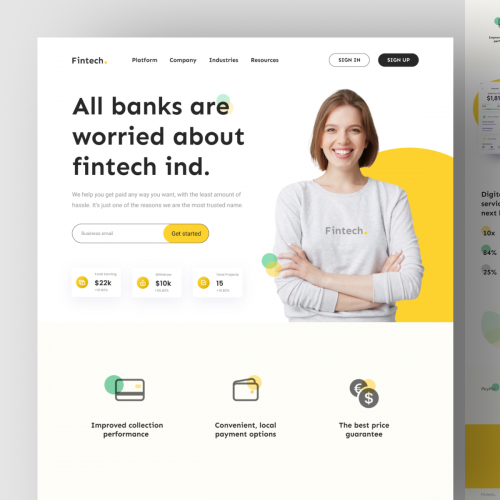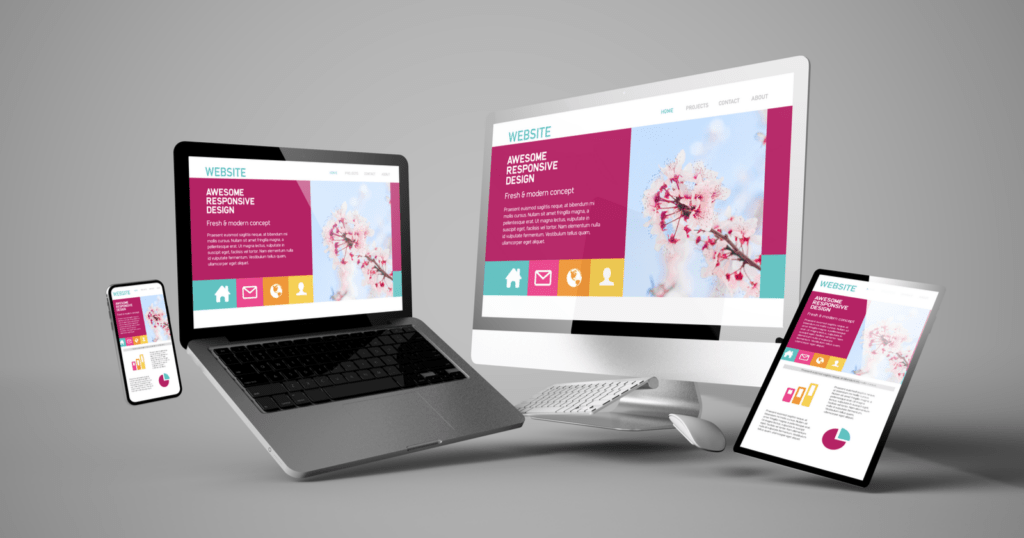Advanced Website Design with Focus on Functionality
Advanced Website Design with Focus on Functionality
Blog Article
Top Tips for Producing an Impactful Internet Site Layout That Transforms
To attain this, one must consider a range of factors, including comprehending the target audience, prioritizing user experience, and optimizing for mobile systems. The calculated usage of compelling call-to-actions and a distinct aesthetic power structure plays a critical duty in leading users through their journey.

Understand Your Target Audience
Comprehending your target market is fundamental to efficient site design, as it prepares for developing an appealing individual experience. Recognizing that your users are, including their demographics, choices, and actions, enables designers to customize the site's web content, layout, and functionality to fulfill certain demands.
Conducting complete market research study is crucial in this process. Surveys, interviews, and analytics can offer valuable understandings right into customer expectations and discomfort factors. By compiling this data, designers can produce user identities that represent different sections of the target market, making certain that style decisions are informed and relevant.
Additionally, comprehending the target audience helps in picking appropriate style components such as color pattern, typography, and imagery that resonate with users. A site that speaks directly to its target market promotes a sense of connection and count on, encouraging longer brows through and greater conversion rates.
Inevitably, a user-centered technique to web site layout not just boosts individual contentment however additionally supports business objectives by driving engagement and commitment. By prioritizing the needs and preferences of the target audience, a web site can successfully offer its purpose and accomplish desired outcomes.
Prioritize User Experience
To improve the total performance of a site, prioritizing individual experience (UX) is vital (Website Design). A well-designed UX makes sure that visitors can navigate the site easily, locate info quickly, and involve with content meaningfully. This leads to raised user fulfillment and greater conversion prices
Begin by applying instinctive navigating. Menus must be realistically structured, enabling individuals to find vital locations of the website with very little initiative. Uniformity in style components, such as color design and font styles, fosters knowledge, which is critical for maintaining user engagement.
Additionally, think about the packing speed of your web site. A hold-up of simply a couple of seconds can bring about substantial drop-offs, as individuals are much less likely to wait for a slow-loading page. Simplifying photos and maximizing code can improve performance and preserve site visitors.
In addition, quality in material presentation is vital. Usage concise, interesting language and separate text with visuals to boost readability. By prioritizing customer experience, you not only create a much more pleasurable atmosphere for visitors but additionally strengthen your brand's trustworthiness. Eventually, a concentrate on UX is an investment in the long-term success of your web site.
Optimize for Mobile Instruments
Optimizing for mobile phones is crucial in today's electronic landscape, where an enhancing variety of individuals accessibility websites through mobile phones and tablets. A mobile-friendly design not just boosts individual experience yet likewise plays a significant function in boosting internet search engine positions. To accomplish this, it is necessary to take on a responsive layout that automatically adapts to various display dimensions and orientations.

Loading rate is another essential variable; mobile customers are normally much less client and anticipate quick access to information. Optimize images and utilize web browser caching to boost efficiency. Lastly, test your site on several tools and screen resolutions to determine and remedy any kind of possible usability concerns. By focusing on mobile optimization, you make sure that your internet site continues to be affordable and efficiently engages a more comprehensive target market.
Usage Engaging Call-to-Actions
A website's efficiency typically depends upon its capacity to direct visitors towards desired activities, making compelling call-to-actions (CTAs) necessary components of layout. CTAs work as the critical points that direct individuals to involve with the website, whether that means buying, enrolling in a newsletter, or downloading a resource.
To develop efficient CTAs, clearness is paramount. Usage concise language that plainly communicates the activity you desire the user to take. Expressions such as "Get Begun," "Join Free," or "Store Now" not only share urgency but likewise remove obscurity. The placement of CTAs is equally important; they ought to be purposefully positioned throughout the web page to ensure they are easily visible, particularly in high-traffic areas.
Additionally, think about using directional signs, such as arrowheads or images, to guide users toward these switches. By focusing on these elements, services can considerably enhance customer interaction, driving conversions and ultimately attaining their web site's goals.
Emphasis on Visual Power Structure
Effective web site layout counts greatly on a well-structured visual hierarchy that you can try these out overviews customers with material flawlessly. By arranging aspects in a manner that prioritizes information, developers can improve user experience and promote decision-making. This entails using dimension, color, contrast, and spacing tactically to accentuate the most vital parts of a webpage.
Using bigger font styles for headings and subheadings establishes a clear distinction between various areas, enabling customers to check content effortlessly. Furthermore, using contrasting shades for switches and calls-to-action can record customer focus and encourage interaction. Whitespace is another vital part; it avoids mess and enables individuals to concentrate on essential messages without diversions.
Images and graphics ought to complement the text while also adhering to the well-known hierarchy, enhancing the total message (Website Design). Consistency in style aspects, such as color design and have a peek at this website typography, more enhances the aesthetic power structure, making navigation intuitive

Conclusion
In conclusion, reliable internet site style necessitates a thorough understanding of the target market, prioritization of individual experience, and mobile optimization. The tactical use engaging call-to-actions and a well-defined aesthetic power structure additionally enhances individual interaction. By implementing these concepts, web sites can accomplish higher conversion rates, ensuring that style elements not only bring in site visitors yet likewise help with smooth navigation internet and interaction. Inevitably, a well-executed site layout serves as a crucial component in driving individual actions and achieving business goals.
Report this page